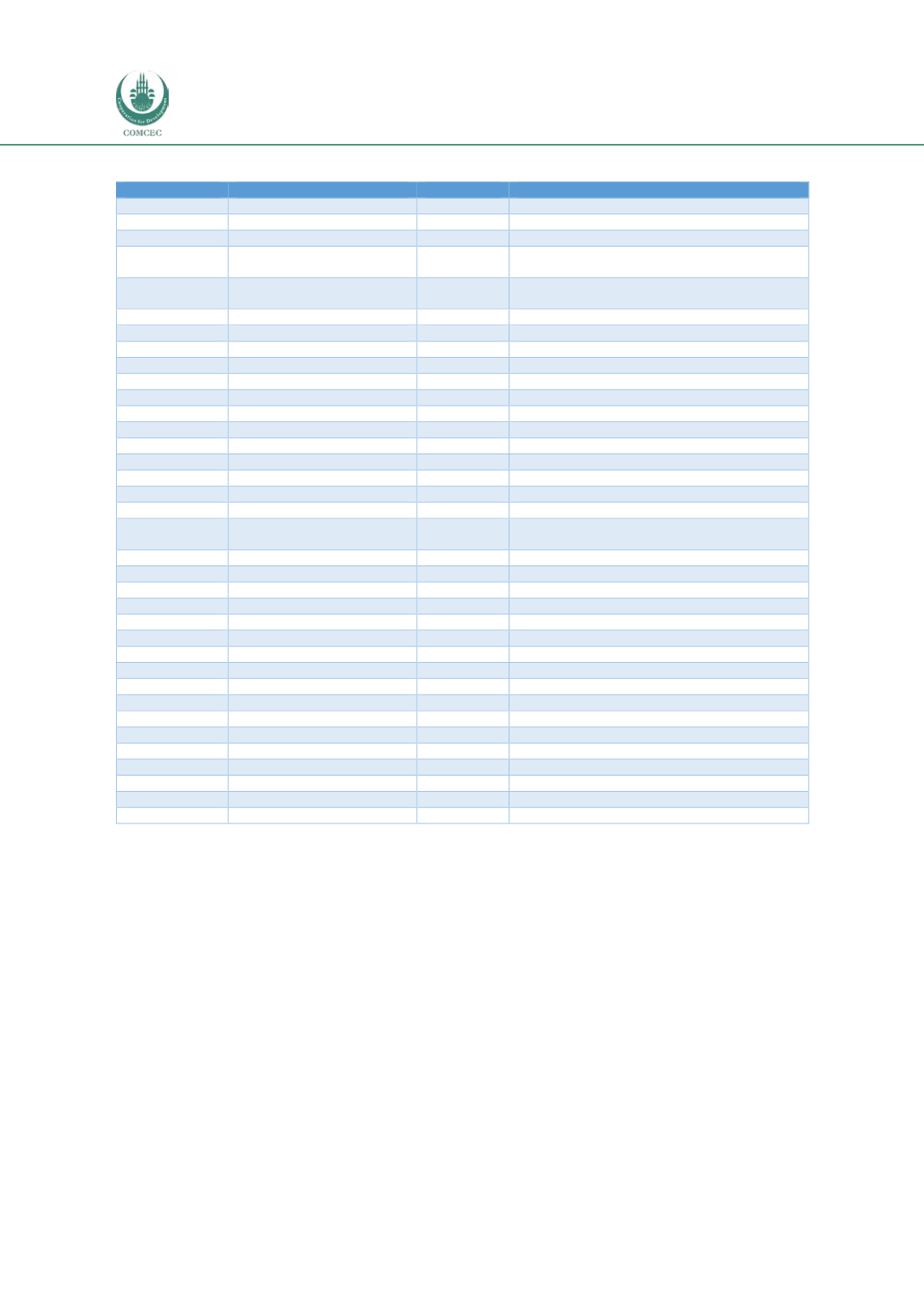

Improving Agricultural Market Performance:
Developing Agricultural Market Information Systems
70
Table 6: Output of Selected Major Egyptian Agricultural Crops (Tonnes)
Commodity
Subcategory
2013
Main markets
Cereals
Maize
7,956,593
Domestic
Rice
5,724,106
Mostly domestic
Wheat
9,460,200
Domestic
Sugar
Beet
10,044,266
Mostly domestic, some refined, pulp and molasses
exported
Cane
15,780,005
Mostly domestic, some refined, pulp and molasses
exported
Food legumes
Broad beans
157,639
Domestic
Green beans
257,469
Domestic
Peas
190,127
Domestic
Fresh fruit
Apples
629,613
Domestic
Bananas
1,158,224
Domestic
Dates
1,328,468
Domestic
Grapes
1,434,666
Mostly domestic
Mangoes
712,537
Domestic
Melon
924,768
Domestic
Olives
541,790
Mostly domestic
Oranges
2,855,022
Domestic and export (fresh and juice)
Peaches
281,119
Domestic and export
Fibres
Cotton
435,000
Mostly domestic
Fresh
vegetables
Artichokes
304,298
Domestic
Cabbage
555,474
Domestic
Chillies and green peppers
565,424
Domestic
Cucumber
504,558
Domestic
Eggplants
1,246,707
Domestic
Garlic
234,164
Domestic
Onions
1,093,230
Domestic, some exported dry
Potatoes
4,265,178
Mostly domestic but substantial export
Pumpkins
494,664
Domestic
Tomatoes
8,290,551
Domestic
Livestock/meat
Eggs
470,863
Domestic
Beef (all types)
888,182
Domestic
Buffalo (all types)
779,619
Domestic
Chicken (all types)
1,786,842
Domestic
Aquaculture*
All types
1,137,000
Domestic
Dairy
Butter (buffalo & cow)
121,900
Domestic
Cheese (buffalo & cow)
374,750
Mostly domestic, some export
Milk (cow)
2,908,071
Domestic
Source: FAOSTATS and representatives of government and donor agencies interviewed during visit to Egypt.
* = 2014 figure
Recent significant macroeconomic adjustments, including the depreciation of the Egyptian
Pound, have encouraged a strong focus on exports (Torchia and Aboulenein, 2016). This has, to
some extent, led to a dual agricultural economy with a relatively technology led and
international food-safety compliant export sector and a largely traditional and non-compliant
domestic sector. Sectors considered as strategic, such as wheat, have significant government
policy engagement, including maintenance of guaranteed minimum prices and pan-territorial
farmgate pricing.
FAO/EBRD (2015) reports that the government buys all wheat at a price higher than the import
parity price and this tends to discourage production of other crops such as potatoes, onions and
forage. The government controls the price and organises all imports to make up for domestic
shortfalls. Subsidies occur along the value chain from fertilizer to rationed
‘baladi’
bread given
to 65 million Egyptians through a ration card system at a fraction of the free market price.
Information about the wheat floor price is disseminated throughout the country through media,


















